Last winter, we flew to the second-largest of the Canary Islands: Fuerteventura. The island is especially popular in winter – even in January and February, you can expect pleasant, summery temperatures. Friends told us about the stunning coastal landscapes, charming towns, and spectacular volcanic landscapes – perfect conditions for exploring the sights of Fuerteventura!
We spent two weeks on the island, combining vacation with “workation” (work & vacation). This allowed us to discover the highlights of Fuerteventura without any stress and in a relaxed manner, while working at the same time. In this article, we’ll show you the most beautiful sights of Fuerteventura and give you plenty of tips for your own stay. Have fun browsing!
- About Fuerteventura
- What to expect on Fuerteventura
- Sights in Fuerteventura
- Other sights
- Activities and excursions on Fuerteventura
- Fuerteventura travel tips
- Conclusion on Fuerteventura
About Fuerteventura
Fuerteventura is characterized by a desert-like landscape and bizarre volcanic formations, which give the island its very own, distinctive character. In the island’s interior, you’ll find rolling hills and vast plains dotted with extinct volcanoes and black basalt cliffs – a backdrop that seems completely surreal in places.
Between the barren expanses, deep gorges and valleys repeatedly open up, lending the landscape a certain drama. Even during our approach, we were able to glimpse some of these extraordinary formations and landscapes from the window.
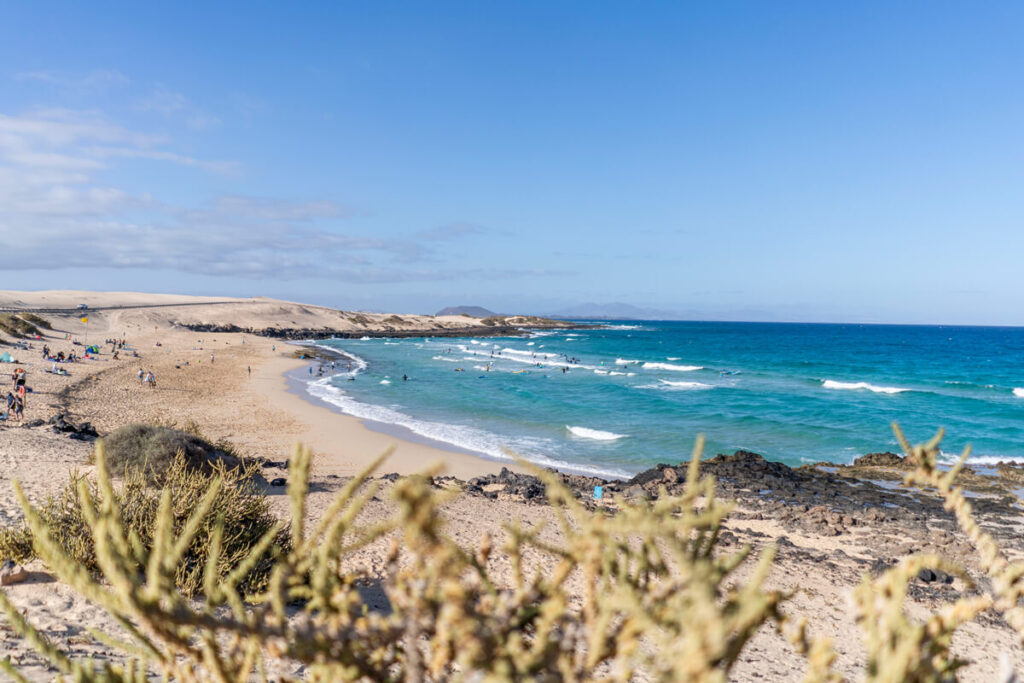
Along the coast, you’ll find miles of golden sandy beaches lapped by the azure waters of the Atlantic. The beaches range from wide, flat stretches to imposing cliffs and hidden coves. We’ll tell you which beaches are particularly recommended a little further down.
The expansive dunes of Corralejo in the north and the seemingly endless beaches of Jandía in the south are also particularly impressive. If you prefer lush green landscapes, Fuerteventura isn’t necessarily the right choice. Nevertheless, a holiday on this island is worthwhile.
What to expect in Fuerteventura
Endless sandy beaches: Kilometers of fine sandy beaches that are perfect for sunbathing and relaxing. Our favorite beach: Grandes Playas Corralejo.
Rugged volcanic landscapes: A barren, impressive landscape that is wonderful for hiking and exploring. A hike up the Calderón Hondo volcano is popular.
☀️ Mild climate all year round: Sunny weather and pleasant temperatures all year round. Even in February, we had great weather every day with temperatures between 20 and 25°C.
♀️ Water sports paradise: Ideal conditions for surfing, kitesurfing, and diving – the island is a real hotspot for water sports enthusiasts. Boat trips, SUP, and dolphin tours are also offered.
Traditional villages: Charming, small towns that bring Canarian life and culture to life. We really liked El Cotillo, Betancuria, and Ajuy.
Value for money: Fuerteventura offers great value for money. You can still vacation relatively cheaply here.
Fuerteventura Sights
In the following section, we’ll introduce you to some sights on Fuerteventura. We’ve also marked some cool places to eat on the map.
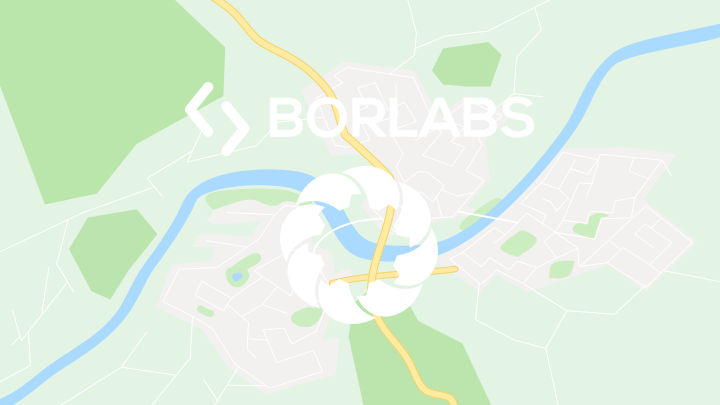
By loading the map, you accept Google’s privacy policy.
Learn more
Load map
The Dunes of Corralejo
One of the most popular sights on Fuerteventura are the huge golden sand dunes that stretch along the coast in the “Parque Natural de las Dunas de Corralejo” in the north of the island. The turquoise sea forms a beautiful contrast to the light sand of the dunes, which consist mainly of shell limestone.
From the dunes, which are up to 10 meters high, you have a fantastic view of the coast and the sea, where you can watch not only surfers but also kitesurfers in the water. The dunes of Corralejo offer a prime backdrop for photos. A visit in the evening at sunset is especially beautiful, when the sun gradually sinks behind the horizon and bathes the dunes in a beautiful light.
From Corralejo, it’s only about 10 minutes by car until you reach the dunes. You can park your car for free on the side of the road and walk directly through the dunes on the other side of the road. In the early morning or late afternoon, the light is particularly beautiful there and the temperatures more pleasant.
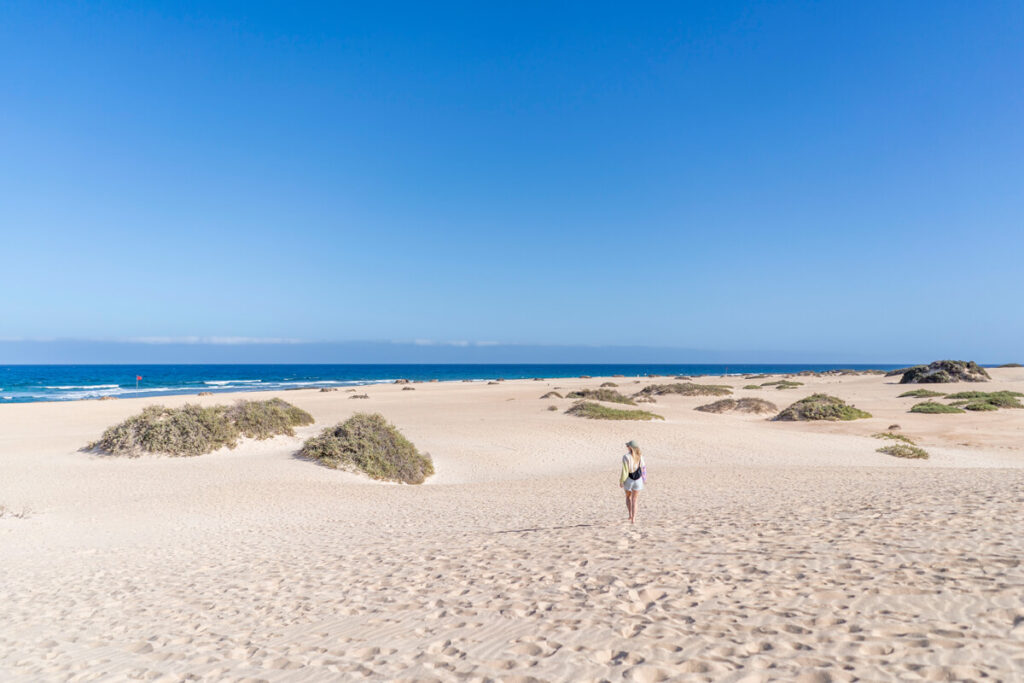
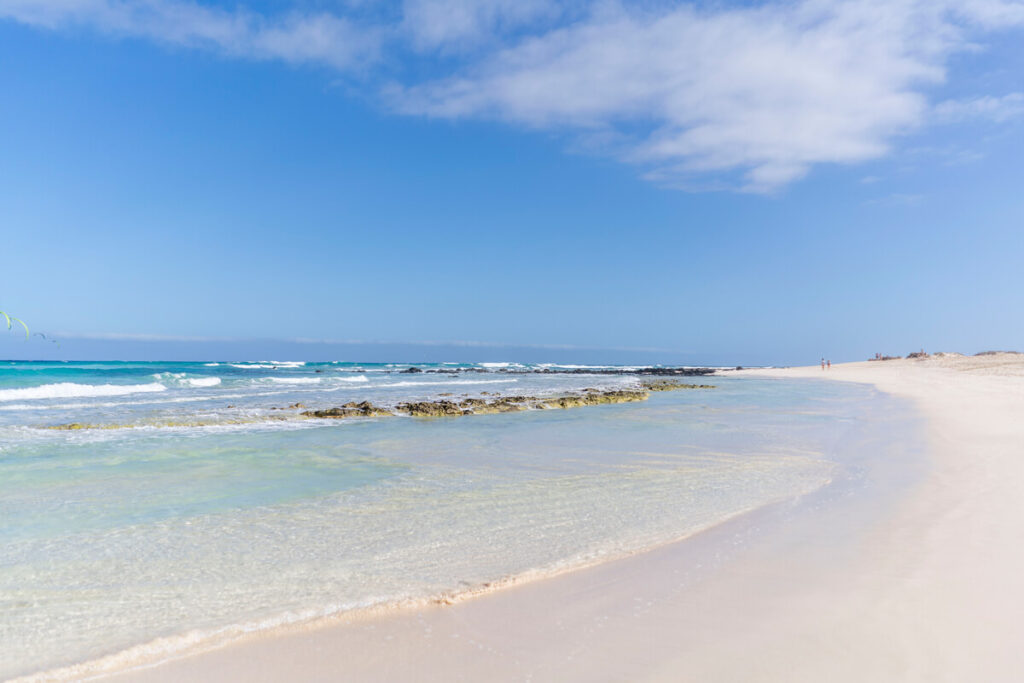
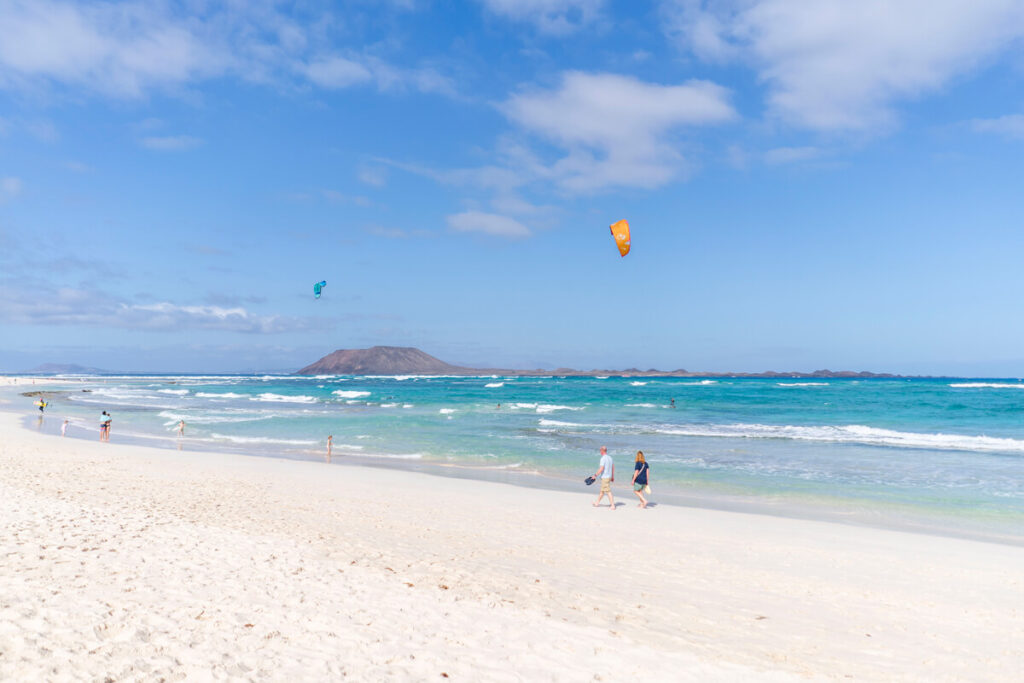
Excursion to Isla de Lobos
Just 2 kilometers off the coast of Fuerteventura lies the uninhabited (rather barren) volcanic island of Lobos, which you can visit by excursion boat. Sea lions (lobos marinos) once lived on the coast of the small island, which gave the island its name.
The nature reserve awaits you with bathing coves and beaches, marked hiking trails, and a lighthouse. Be sure to bring sturdy shoes, plenty of drinks, snacks, a hat, and sunscreen. To best protect this protected natural area, the daily visitor count was limited to 400 in 2019 (200 people in the morning and 200 people in the afternoon).
You must apply for a permit before your trip. At the port of Corralejo, you’ll find various companies offering crossings and tours to the island. You’ll usually have at least a four-hour layover before returning to Corralejo. Alternatively, you can also book a guided tour, which already includes the crossing and the permit.
- Book a return ferry ticket to Lobos Island with entrance fee*
- Book a catamaran day trip to Lobos Island for adults only*
- From Corralejo: Book the entrance to Lobos Island and a snorkeling trip*
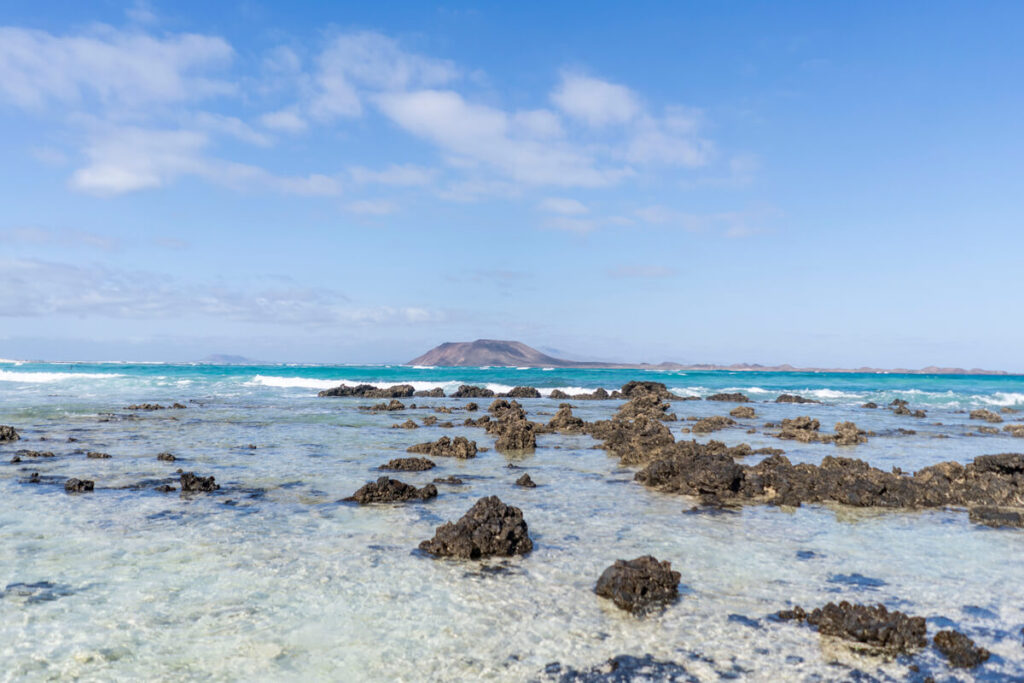
Strolling through Corralejo
Corralejo offers the perfect mix of shopping, nature, and action. This small town in the north of Fuerteventura has everything a tourist could wish for. Here you’ll find restaurants, cafés, bars, shops, surf schools, accommodations, and excursions.
In addition to the beautiful beaches all around, Corralejo has much more to offer. The port town is a paradise for surfers, kitesurfers, and windsurfers, as the wind conditions are usually very good. If you’re not on a board yourself, it’s also incredibly exciting to watch the pros from the beach. In the local surf shops and schools, you’ll find everything you need for your adventure.
In the evening, Corralejo really comes alive. The promenade and the old town offer an incredible selection of restaurants that cater to every taste – from fresh fish dishes to delicious tapas. Go with the flow, enjoy the food and, above all, the super relaxed atmosphere.
Our food tips for Corralejo:
- Vrebac Gelato or El Gusto
- Palm Beach Club
- Malverde Taqueria
- Bombay Masala
- H2O Juice Bar & Vegan Café
- La Lonja at the harbor


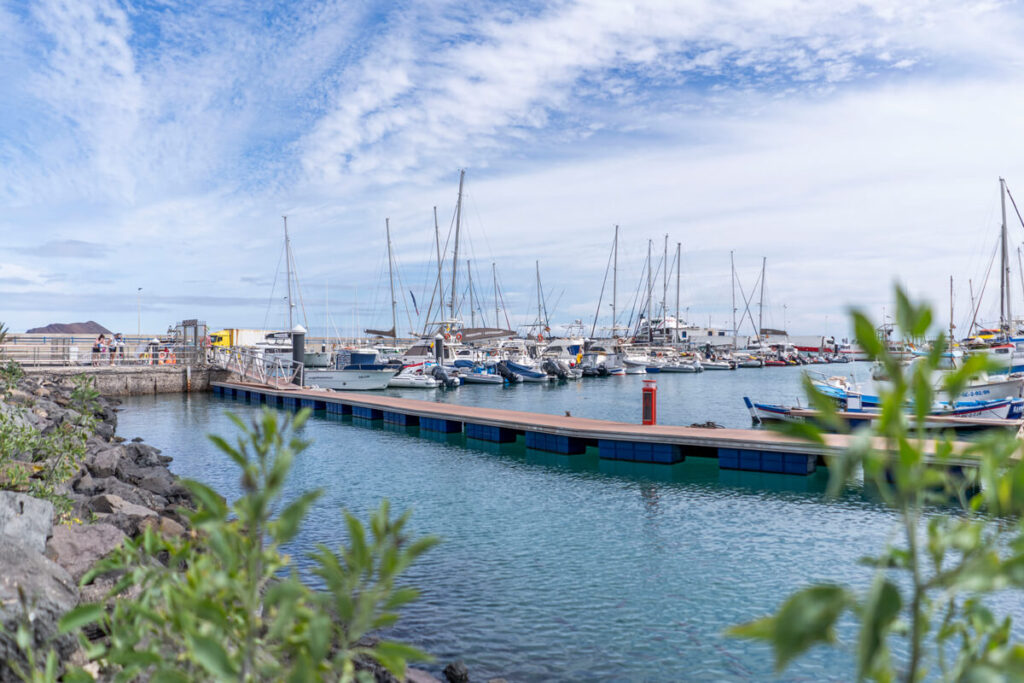
El Cotillo Fishing Village
El Cotillo – a small fishing village that immediately captured our hearts! Located in the west of Fuerteventura, it’s the perfect spot to discover the wild side of the island while enjoying the typical Canarian flair. Things are much quieter here, and that’s exactly what makes El Cotillo so special.
The small fishing village may be smaller than Corralejo, but it’s just as exciting for surfers and water sports enthusiasts. The beaches offer first-class conditions, and the local surf schools provide you with everything you need for your first wave rides. A real highlight is Playa del Costillo, which makes surfers’ dreams come true with its fine, white sand and often strong surf.
After a day at the beach or on the board, there’s nothing better than stopping off at one of the small restaurants by the harbor. It’s especially nice to sit on the promenade at sunset, enjoy a glass of wine and watch the slow hustle and bustle of the village. No large hotel complexes, no hustle and bustle – just sun, sea and that relaxed, Canarian attitude to life.
Our food tips for El Cotillo:
- Triton’s Coffee Lab
- Pizzeria Teperino
- El Cotillo Smoothie Spot
- Cocoté café & shop pastel
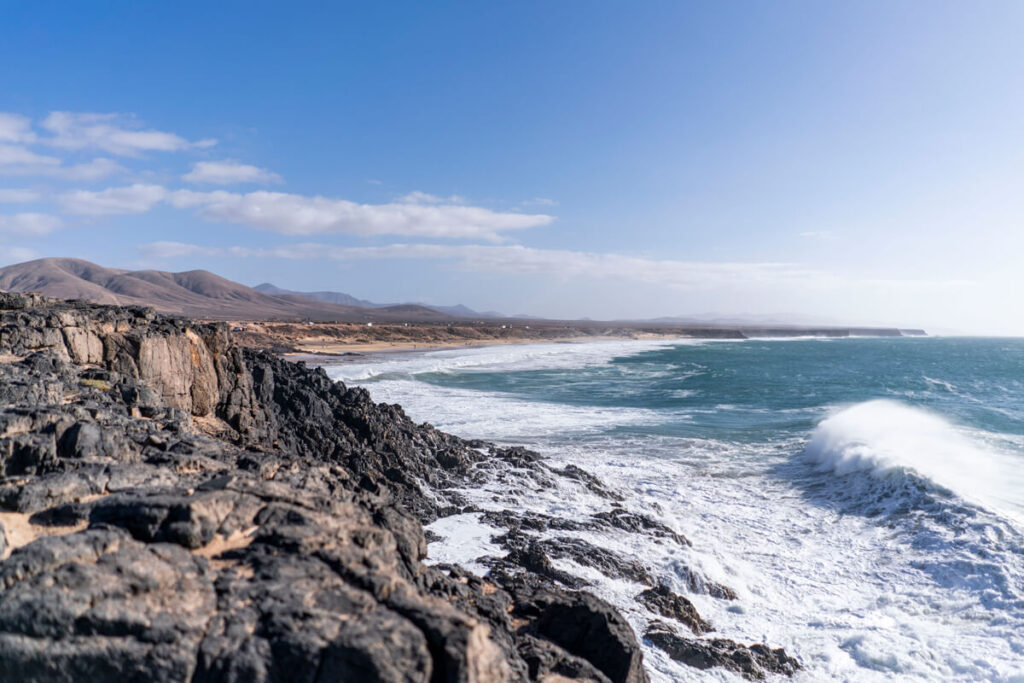
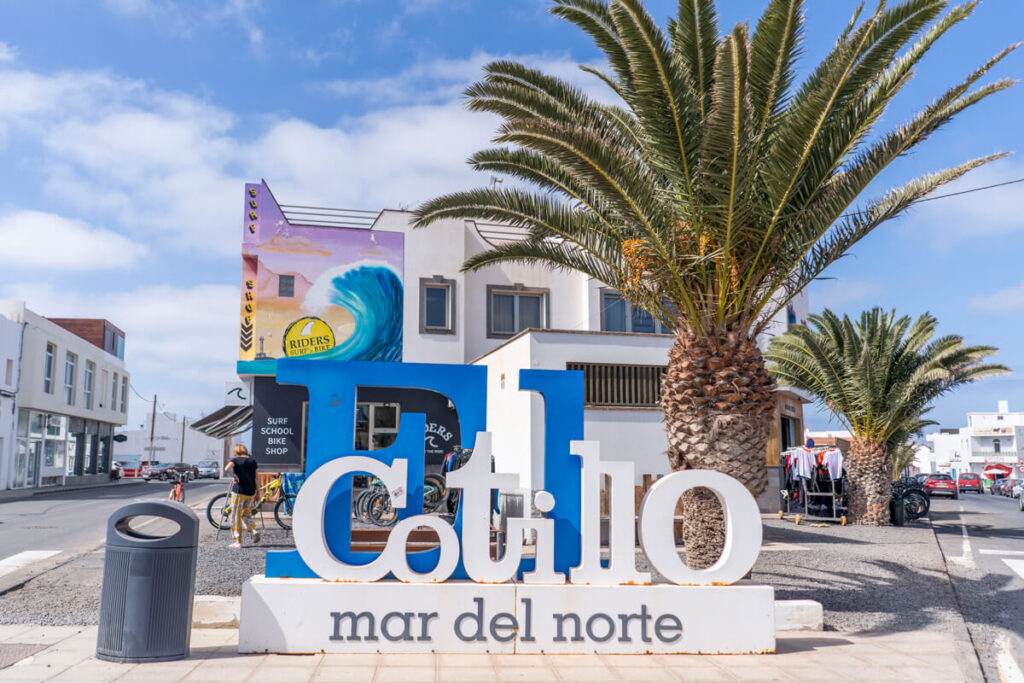

Cool Surfer Village of Lajares
Our accommodation was just a 10-minute drive from Lajares, a small surfer village in the north of the island. Lajares is a relaxed place, without much hustle and bustle, mass tourism, or hectic activity. The streets are lined with small surf shops, boutiques, and cafés where surfers, artists, and locals mingle.
For such a small village, Lajares offers a surprising amount of choice when it comes to food. Whether fresh bowls, vegan dishes, or typical Canarian tapas – there’s something for every taste. Cool events take place regularly at the Skatpark. It’s best to keep an eye on the Instagram channel: Bowl Lajares.
Our food tips for Lajares:
- Café El Arco
- La Paneteca bakery
- Café Amiga Mia
- Camello Bandido (tasty burgers)
- Agua Tiki Bar Lajares
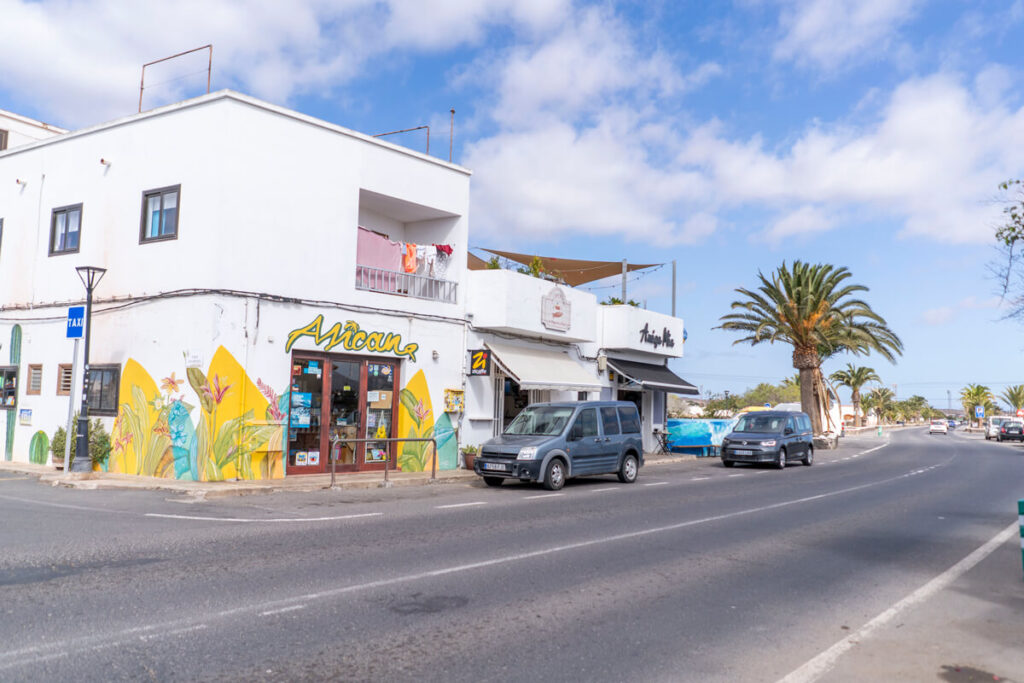
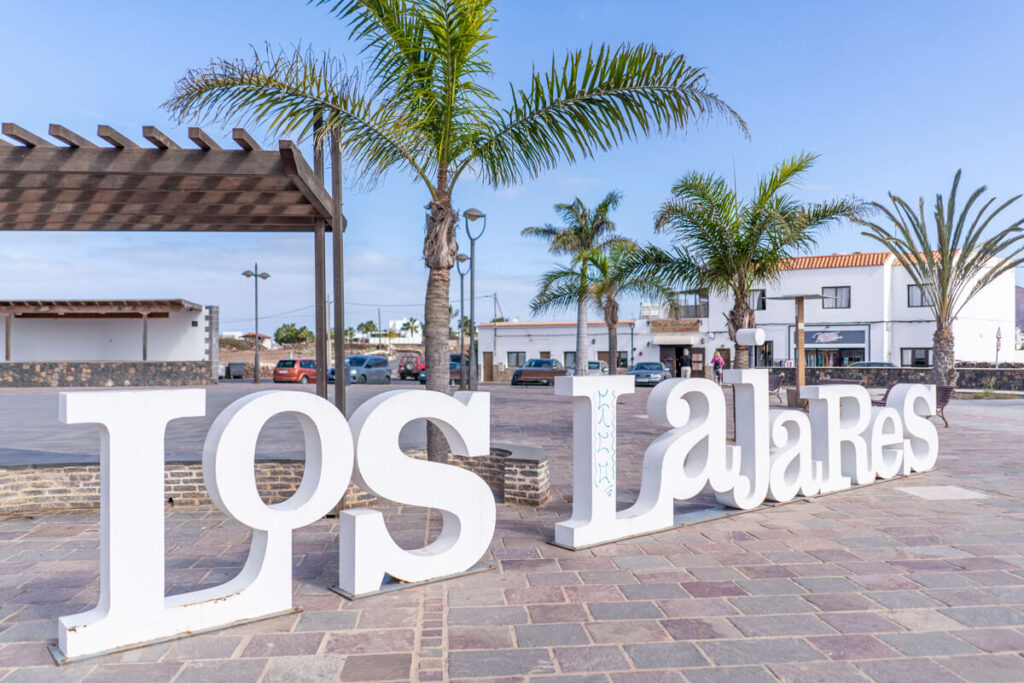
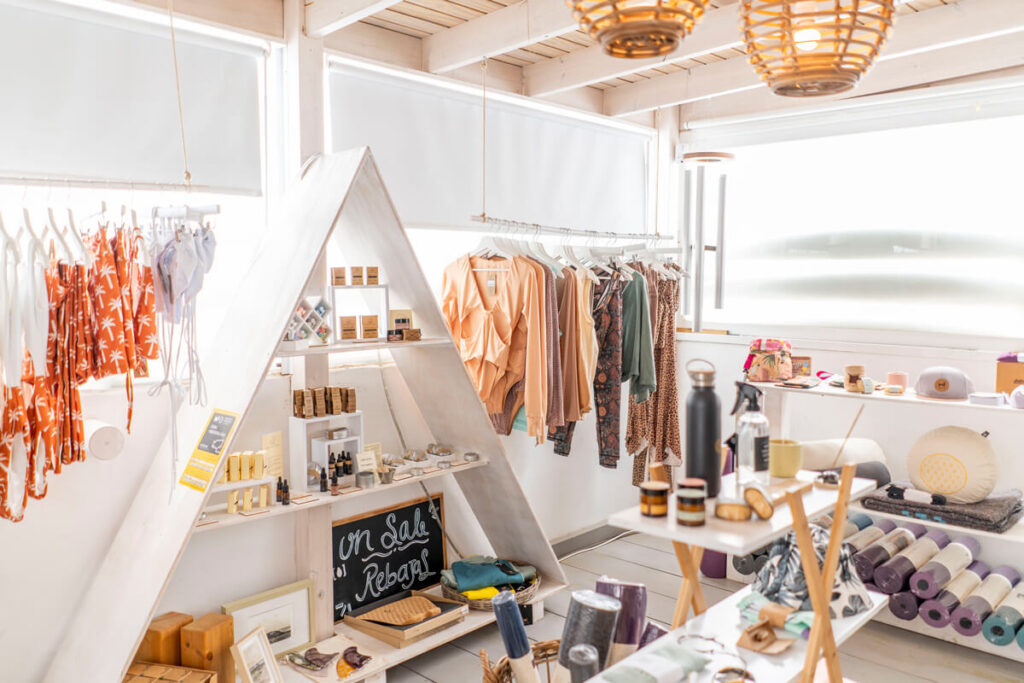
Every Saturday from 10 a.m. to 2 p.m., a great market (Mercado Artesanal de Los Lajares) takes place in the small central square, where locals offer handicrafts. You’ll find really cool surfer jewelry, handmade soaps, clothing, pictures, decorative items, and much more. There is also live music on the small stage. Be sure to stop by; there’s a super cozy vibe in the air.

Excursion to the Calderón Hondo volcano
The area around Lajares is characterized by volcanic cones, which you can climb on well-marked hiking trails. The “Calderón Hondo” (278 m) is one of the most popular trails and offers breathtaking views of the entire island and all the way to Lanzarote from the crater rim.
The circular hike to the crater (routes can be found here) is doable for everyone and takes around 90 minutes. The trail is well-marked and leads you through a fascinating lava landscape. Upon reaching the summit, a crater approximately 70 meters deep awaits you – a truly impressive sight.
Start your hike on the outskirts of Lajares, where you can park your car and stock up on water and snacks. Since there is little shade along the trail, it’s recommended to start early in the morning or late in the afternoon when temperatures are more pleasant. We recommend sturdy shoes, sunscreen, a hat, and fully charged camera batteries.

Windmills of Villaverde
On the outskirts of Villaverde, you’ll find two beautiful windmills on a hill. These windmills are among Fuerteventura’s charming landmarks and offer a special insight into the island’s tradition and history. These historic mills stand like small witnesses to the island’s agricultural past.
The windmills of Villaverde mostly date back to the 19th century, when they were used for milling grain. At that time, agriculture was vital to the islanders’ survival, and the windmills played a central role in their daily lives. Curious little ground squirrels also live in the immediate vicinity.
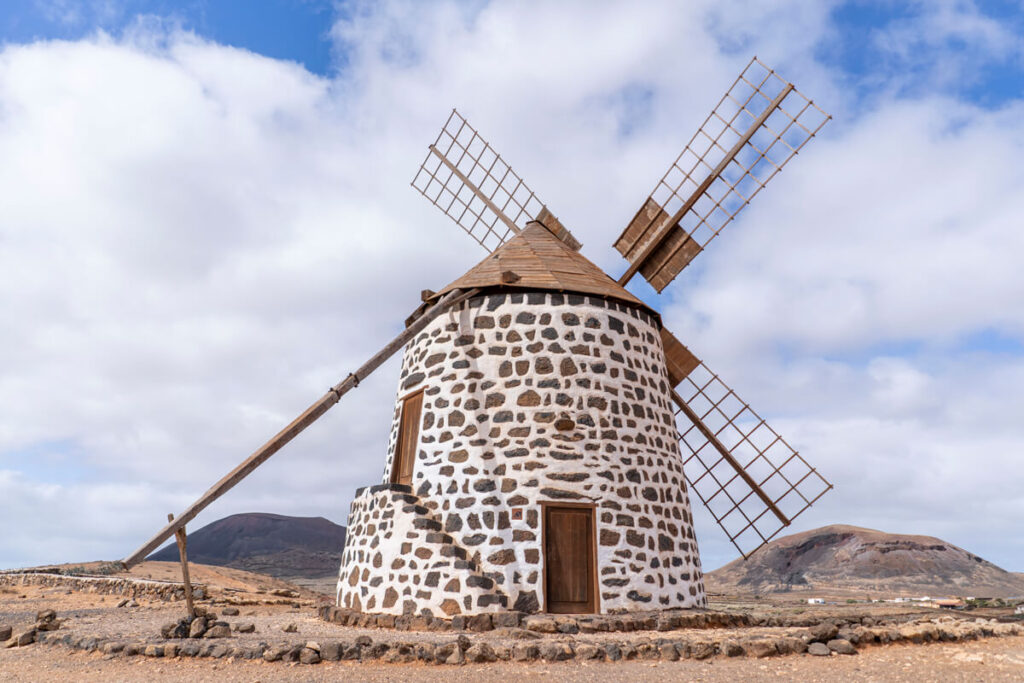
Excursion to the volcano near Villaverde
Just a short distance outside the small town of Villaverde rises the Volcán de la Arena, which is worth the climb for the view alone. We parked the car at the end of the access road C. Montaña de la Arena (in front of the gate) and from there climbed for about 45 minutes to the crater rim. The path leads up behind the houses.
The path itself is usually clearly visible, and with sturdy footwear, the ascent is manageable even for less experienced hikers. The entire route is about 4.5 to 5 kilometers (round trip), and you should plan on about 2 hours – depending on how many photo stops you want to make!
Upon reaching the crater of the Volcán de la Arena (422 meters), you’ll be greeted by an impressive backdrop of dark lava rock and bright red volcanic soil, which offers a brilliant contrast to the otherwise rather dry surroundings. But beware: There’s usually a pretty strong wind up there! Sturdy footwear is recommended, as the path is partly rocky.
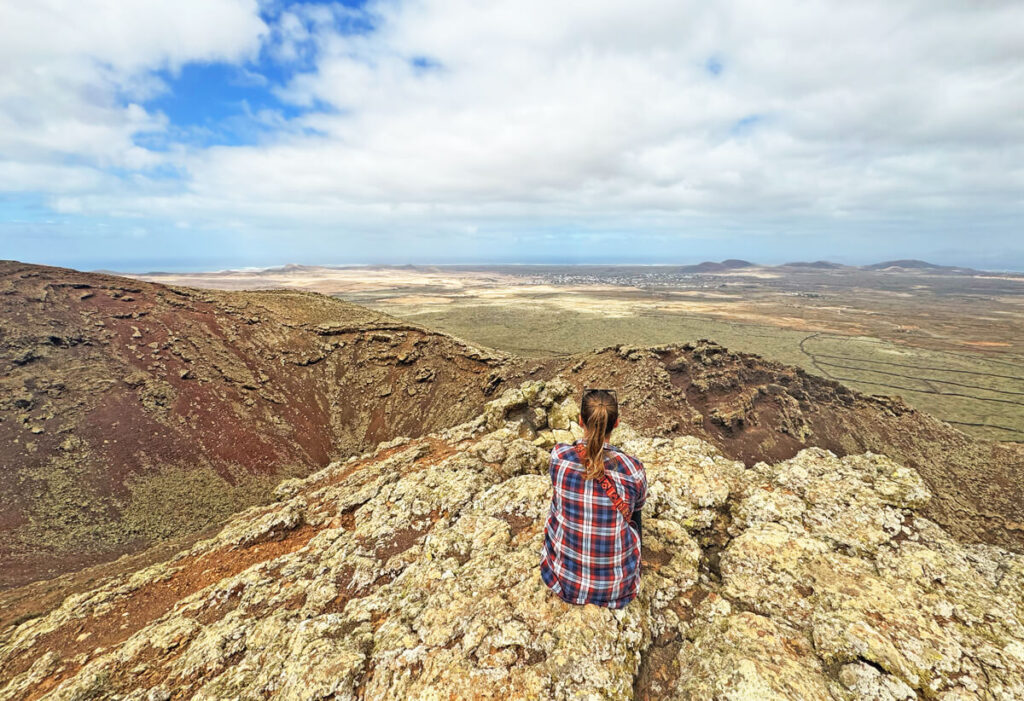
Former capital Betancuria
The city of Betancuria, hidden in a green valley in the west of Fuerteventura, was actually the island’s first capital and also one of the oldest settlements in the Canary Islands. Betancuria was founded in the 15th century by the French conqueror Jean de Béthencourt, who strategically located the town in a sheltered valley.
Strolling through the narrow, quiet streets of Betancuria today, you’ll almost feel like you’ve stepped back in time. The whitewashed houses with their wooden balconies, the cobblestone streets, and the beautiful palm trees that provide shade here and there give the town a truly charming atmosphere. Just go with the flow and enjoy the special atmosphere.
After exploring Betancuria, small, traditional restaurants invite you to linger. Here you can sample typical Canarian dishes such as goat cheese, papas arrugadas (wrinkled potatoes with mojo sauce), and fresh fish. You’ll also find a few shops where you can buy handmade items, souvenirs, and other pretty things.
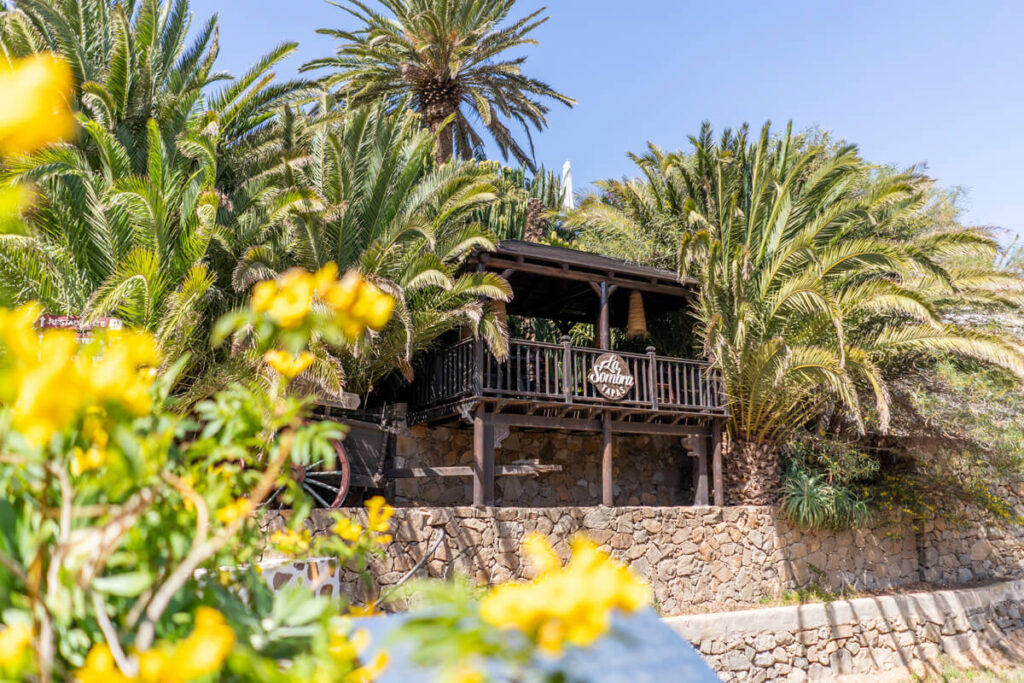
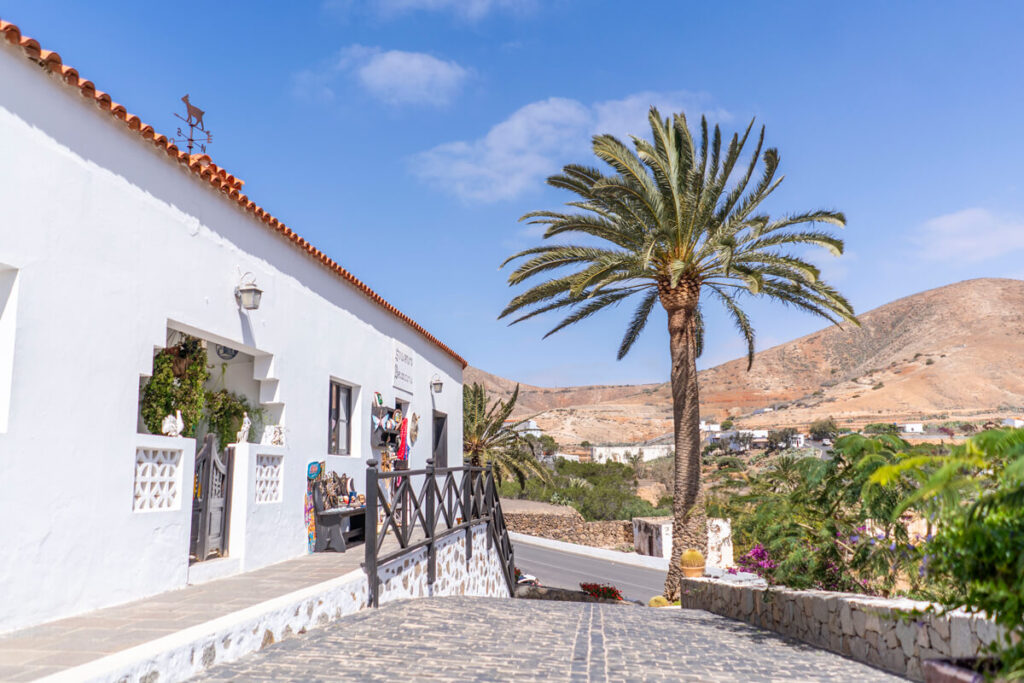
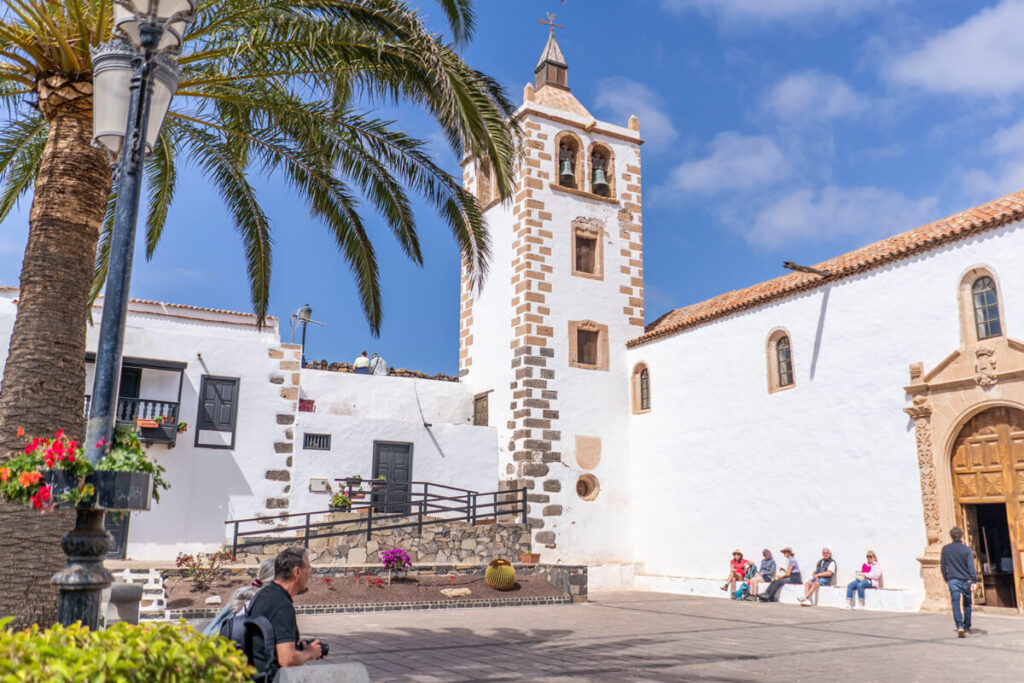
The Most Beautiful Viewpoints
The viewpoints on Fuerteventura offer spectacular panoramas of the island’s wild, diverse landscape – from barren deserts and dramatic rock formations to green oases. If you’re traveling with your own car, you can visit various viewpoints. We’ll introduce you to a few:
Mirador de Morro Velosa: Viewpoint at an altitude of 660 meters, designed by César Manrique, with panoramic views of the island. The FV-30 then continues to Betancuria.
Mirador de Guise y Ayose: Fantastic views of Fuerteventura’s landscape and two imposing statues of the native kings. The FV-30 then continues to Betancuria.
Mirador las Peñitas: Near the famous Las Peñitas Gorge, it offers spectacular views of the green oasis hidden in Fuerteventura’s barren desert landscape.
Risco de las Peñas: Views of the island’s jagged cliffs and valleys. The landscape here shines in warm colors, especially in the morning or evening light. Located between Betancuria and Ajuy.
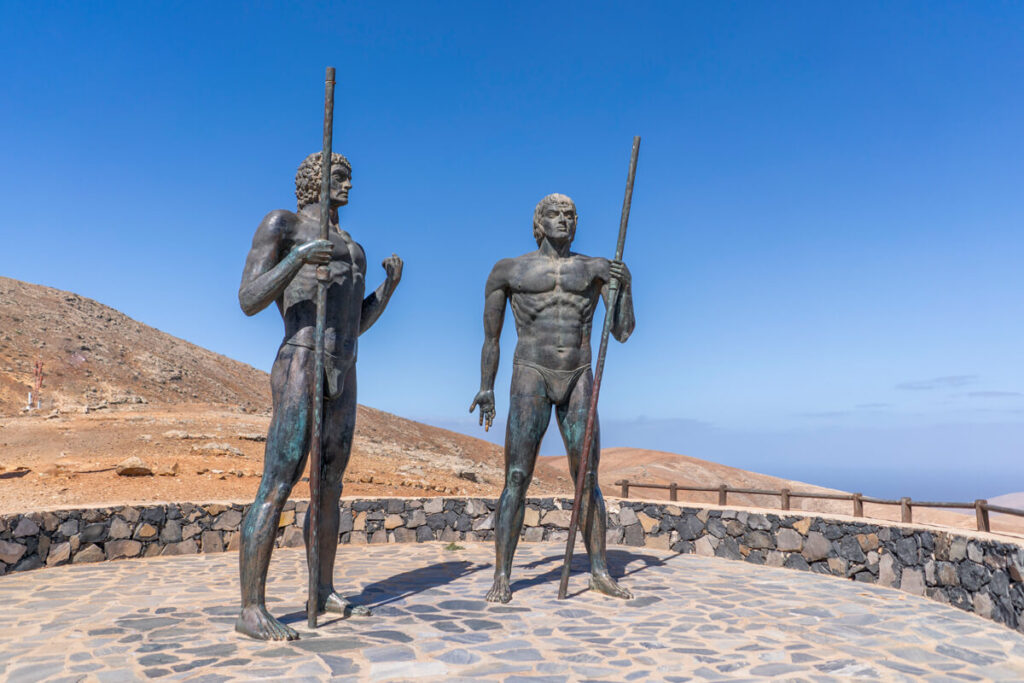
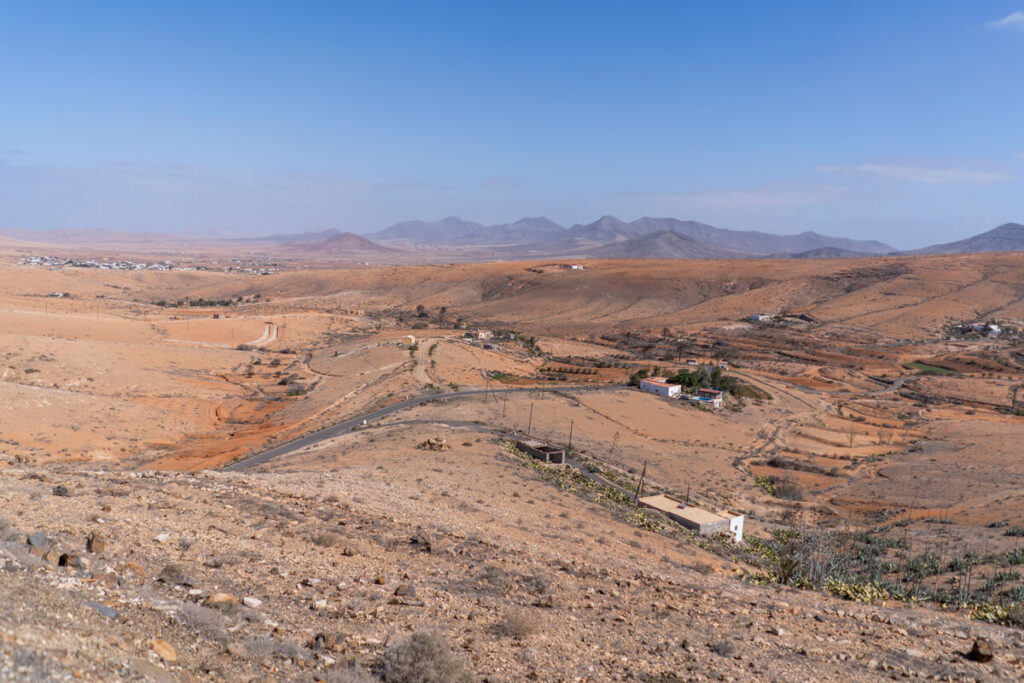
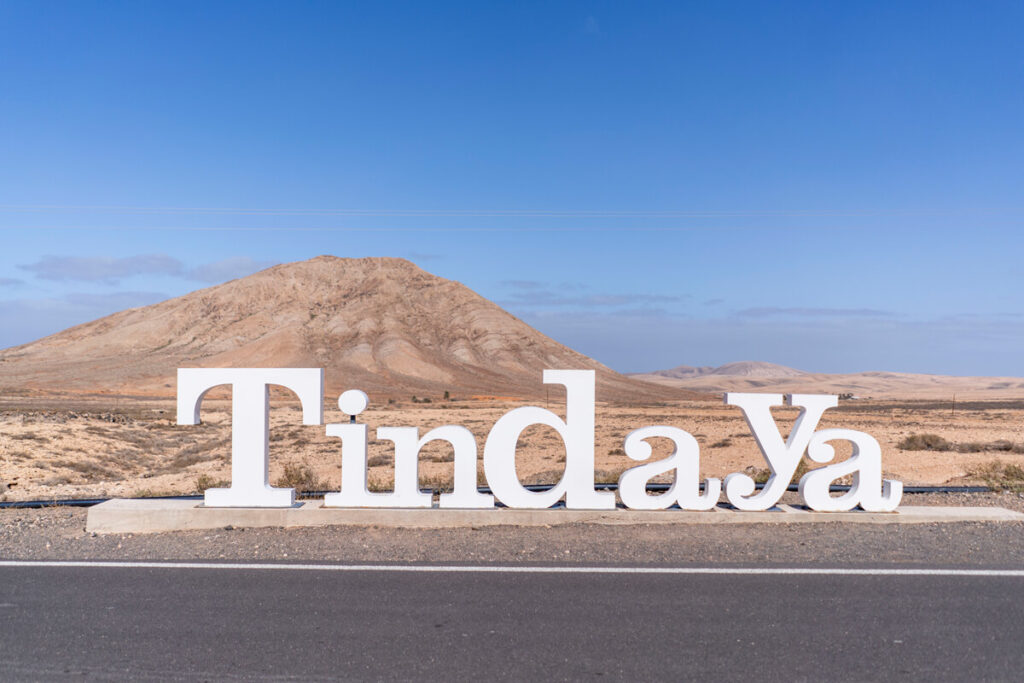
The Caves of Ajuy
The Caves of Ajuy are among Fuerteventura’s most impressive sights. They are located on the island’s wild west coast, near the small fishing village of Ajuy. The caves are among the oldest geological formations in the Canary Islands. They are over 70 million years old and consist of basalt and limestone formations.
A signposted path leads you along the coast to the caves. Along the way, you’ll pass bizarre rock formations, some of which seem otherworldly. It can be quite windy, so bring a jacket. Once you reach the large cave openings, you’ll have a fantastic view of the bay and the rocky coastline.
Incidentally, these caves once served as a refuge for pirates and smugglers, who sought shelter here in the protection of the rocks. After your exploration, stop at one of the small restaurants in the village, where you can sample freshly caught fish and typical Canarian dishes. Another eye-catcher is the black sand beach with its bright cliffs and the turquoise Atlantic.
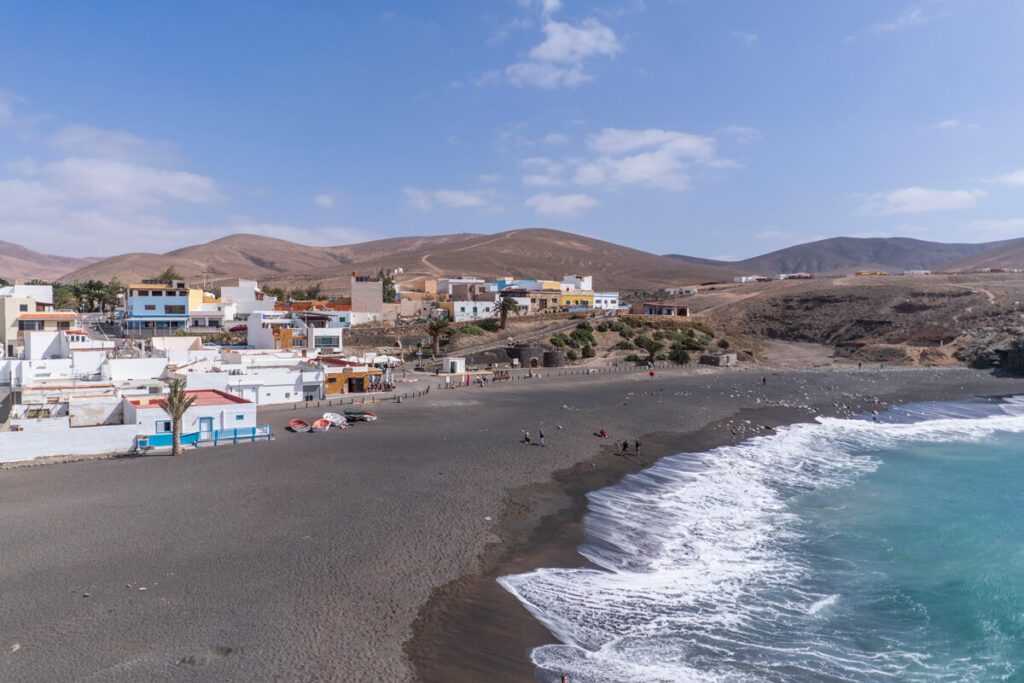
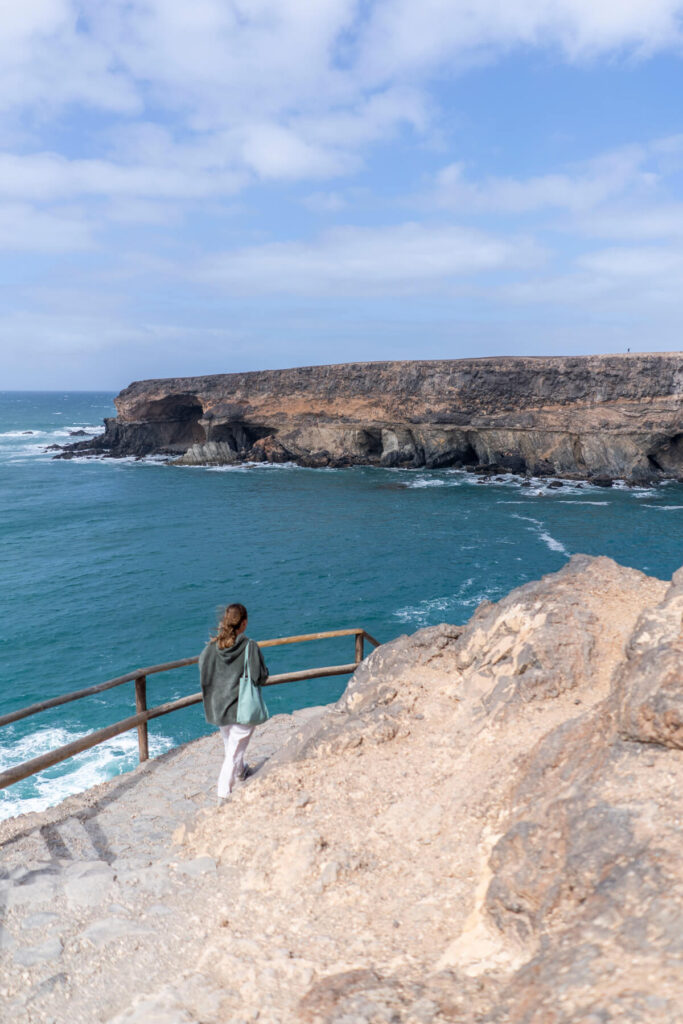
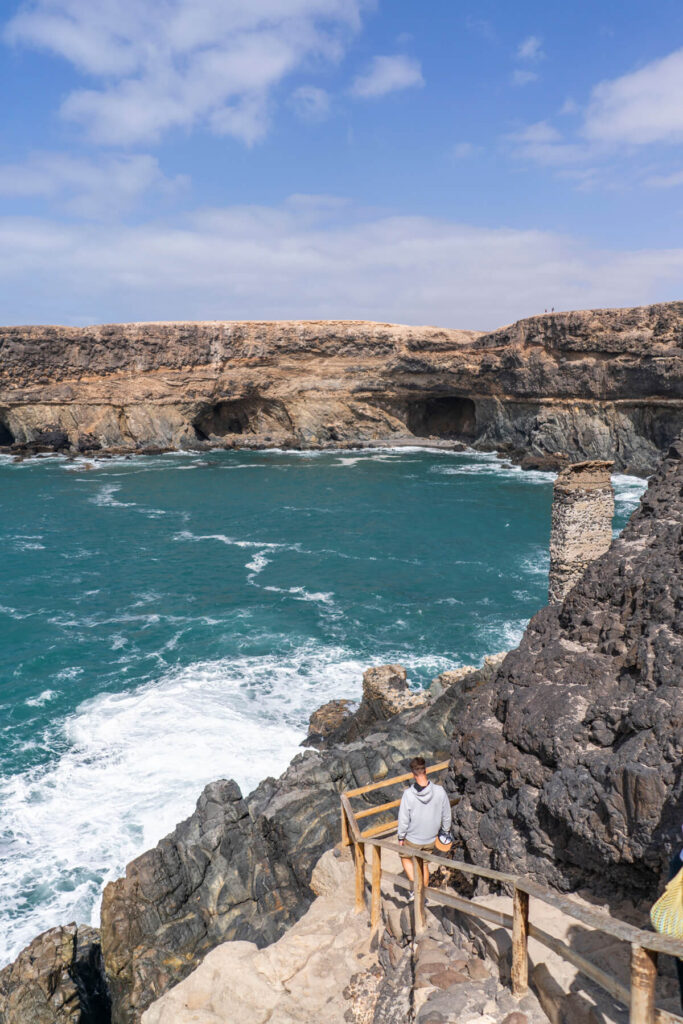
Surf vibes in La Pared
We actually wanted to marvel at a breathtaking sunset in La Pared on the west coast of the island. Unfortunately, it completely overcast, so the clouds blocked our view. Nevertheless, the view from the steep cliffs over the sea and the coast was simply breathtaking.
La Pared is only 10 km from Costa Calma and boasts a beautiful natural landscape. From the cliffs, you can see the imposing mountain range of the Jandía Natural Park. The coastal town is especially popular with surfers, as strong winds and equally strong waves create plenty of swell.
However, La Pared is less suitable for swimming, as there are sometimes strong undercurrents and strong surf. Otherwise, La Pared is a small, quiet town with many private bungalows. There are neither clubs nor large shopping centers, just two bars, a surf school, and a mini-market.
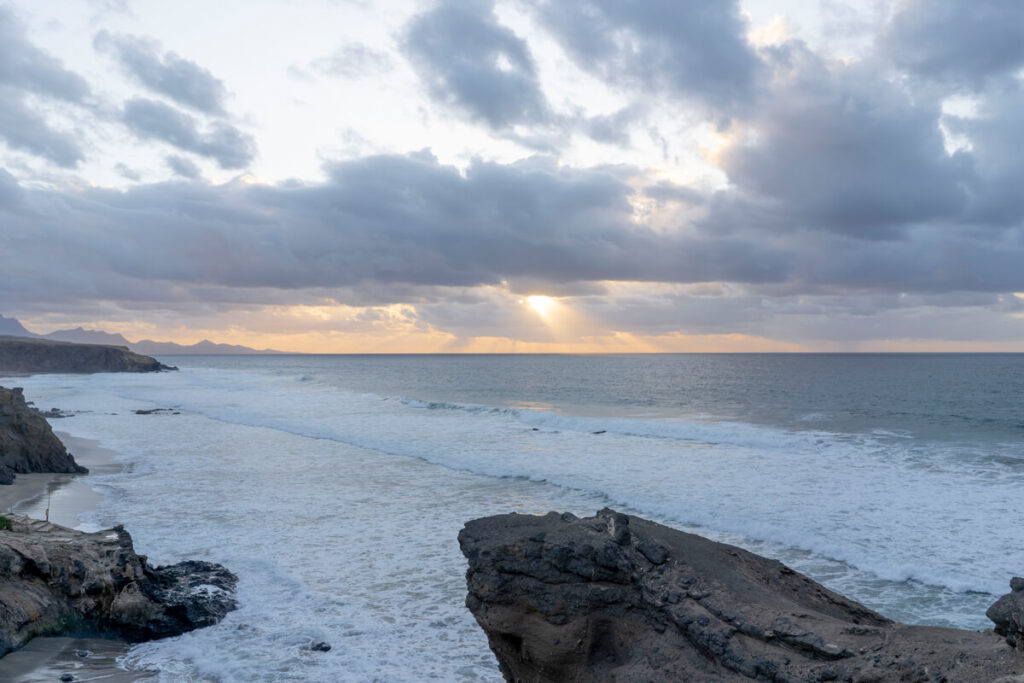
Oasis Market
If you’re looking for authentic handicrafts, fresh regional products, and something a little different, we recommend the Oasis Market on Fuerteventura. The market is located in the Oasis Wildlife Park in La Lajita, in the south of the island – a perfect combination if you’re already planning a trip to the south of the island.
At the market, you’ll find a colorful selection of stalls selling local products such as handmade jewelry, traditional ceramics, natural cosmetics, and freshly harvested fruit and vegetables from Fuerteventura. What’s particularly nice is that the market places great importance on ensuring that many of the products on offer are sustainable and sourced from the island, which sets it apart from other tourist markets.
The market usually takes place on Sundays and is open from mid-morning until early afternoon. It’s worth arriving early to catch the best deals and browse the stalls without the crowds. There’s plenty of parking on site. A visit to the market is also recommended for families with children, as there is much to discover.
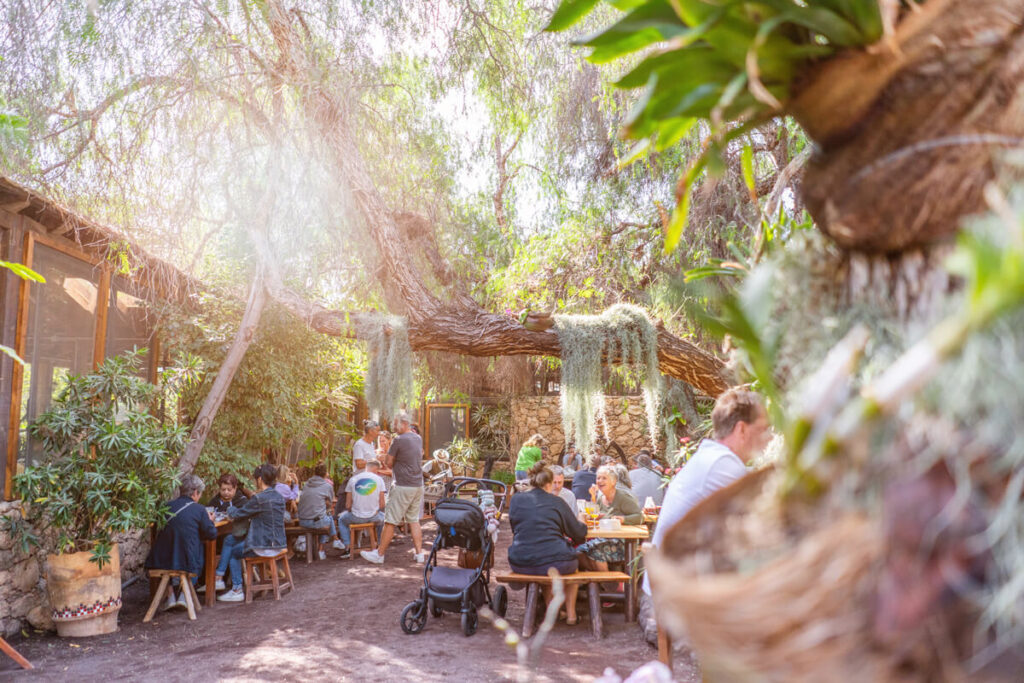
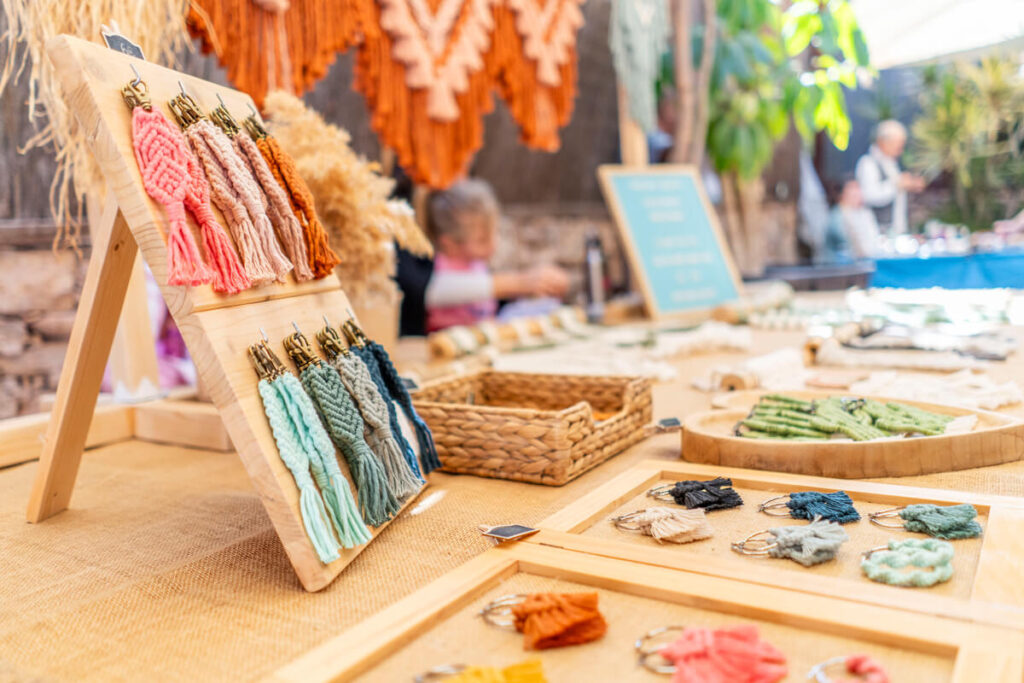
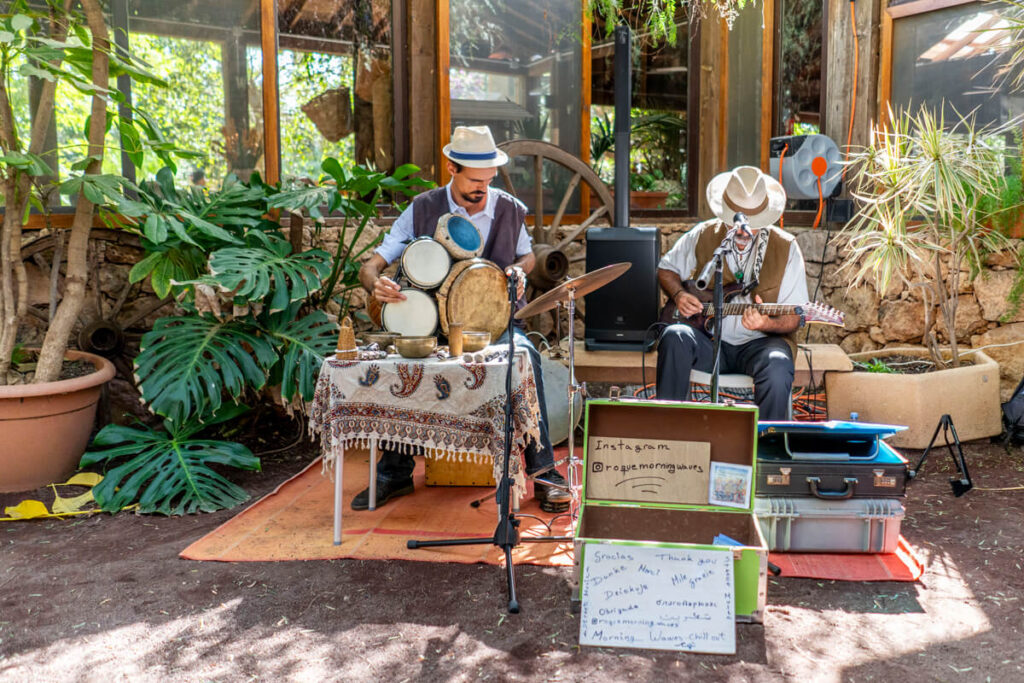
Costa Calma
If you’re looking for a relaxing destination that offers both beautiful beaches and a cozy atmosphere, then Costa Calma is just right for you. Costa Calma is located on the east coast of the island and is known for its miles of fine sandy beaches and turquoise sea.
The coast and streets are lined with lush palm trees, immediately evoking a certain holiday feeling. Costa Calma is an ideal place to simply unwind, laze on the warm sand, and unwind. The town itself may be small, but it offers everything you need for a great day at the beach.
There’s a good selection of cafés, restaurants, and small shops where you can find Canarian delicacies and souvenirs. We also recommend a visit to the Bar Rapa Nui. There you can have a good breakfast, but also enjoy a refreshing drink on the terrace and let the view wander over the sea.
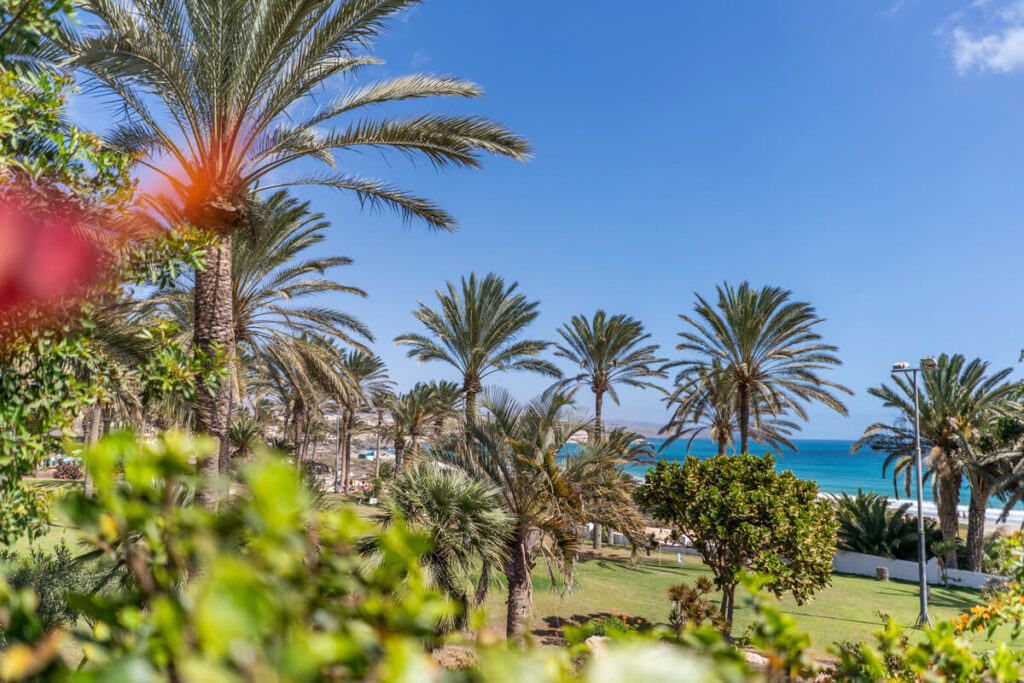
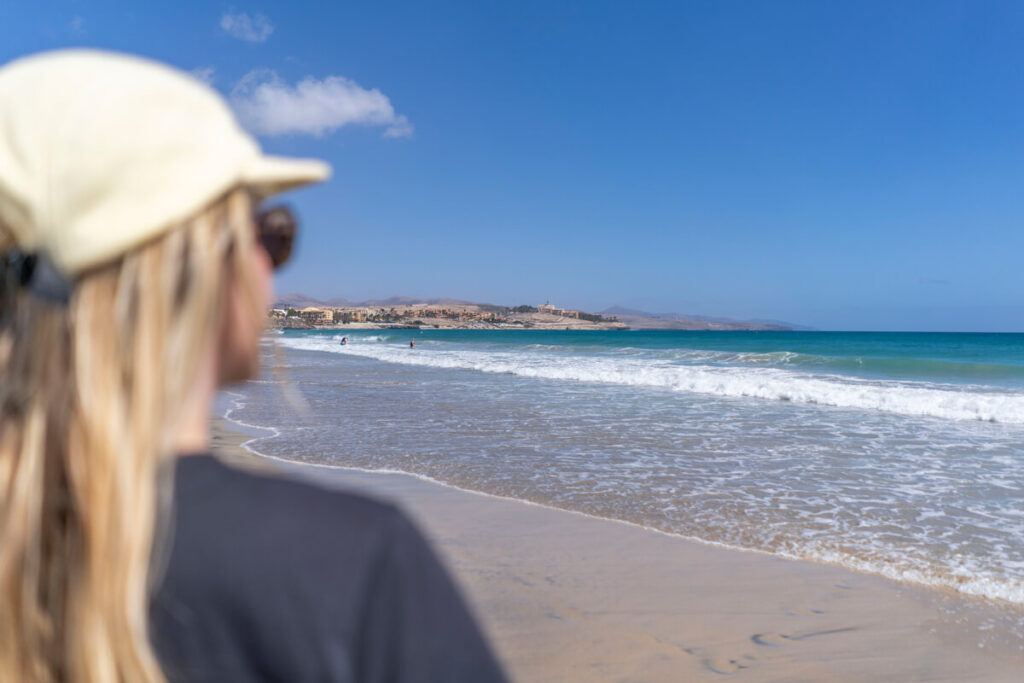
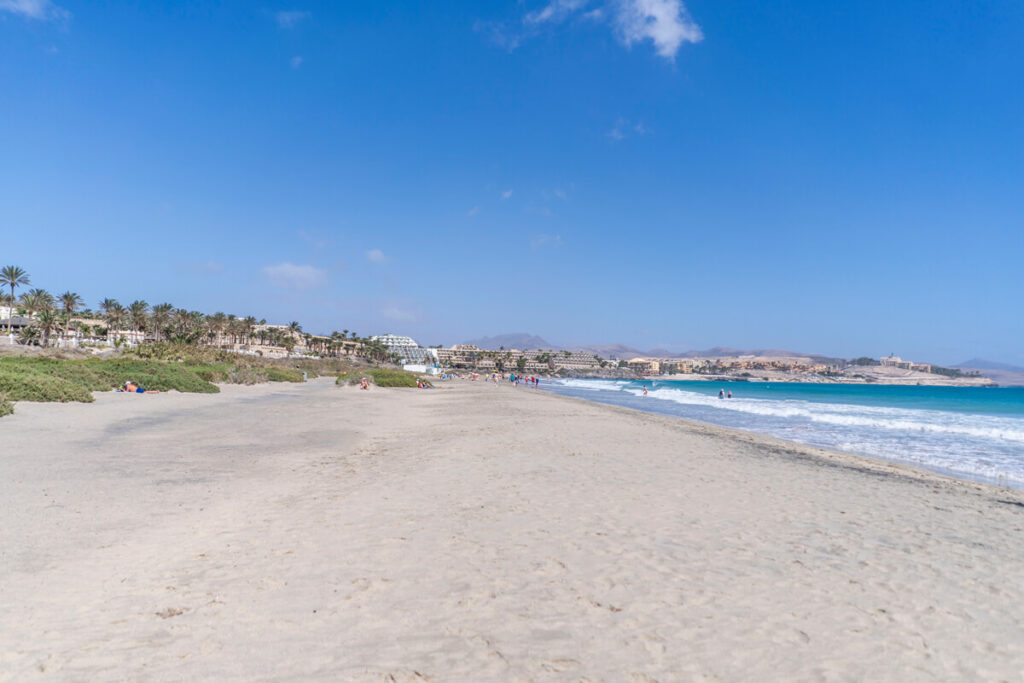
Playa de Sotavento (Lagoon)
What makes Playa de Sotavento so unique is its wide lagoon, which constantly changes shape and size with the tide. The shallow water in the lagoon shimmers turquoise blue and warms quickly in the sun – perfect for a relaxing swim or a stroll through the shallow water.
At high tide, a large, ankle- to knee-deep expanse of water forms here, acting like a mirror and making for a really cool photo opportunity. A tip: It’s best to check the tides beforehand if you want to experience the lagoon in all its glory! Surrounded by sand dunes, the lagoon often feels like you’re in the middle of a secluded oasis.
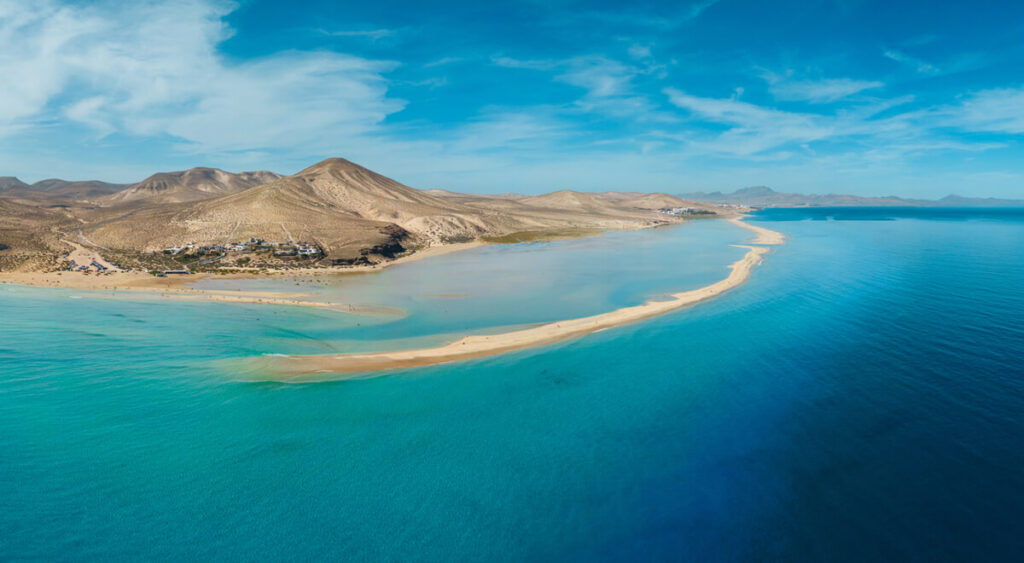
Thanks to the constant winds blowing along Fuerteventura’s east coast, the lagoon is a popular spot for windsurfers and kitesurfers. Sotavento is also perfect for beginners: the shallow lagoon offers ideal conditions for trying out a board and taking your first steps in surfing. Various surf schools offer courses and equipment rentals here, so you can get started spontaneously at any time.
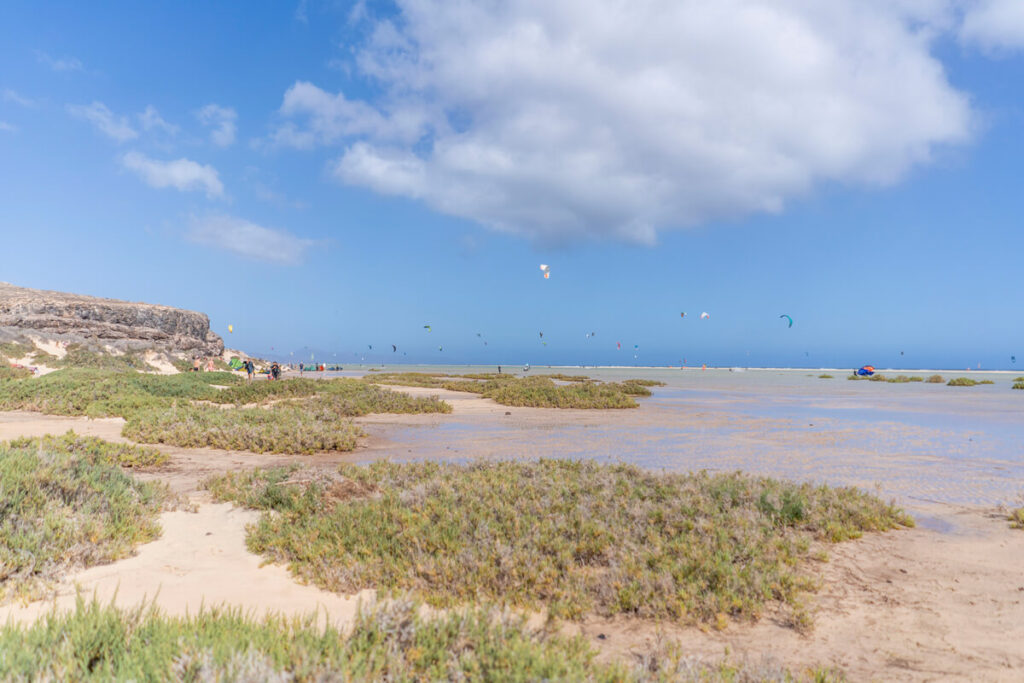
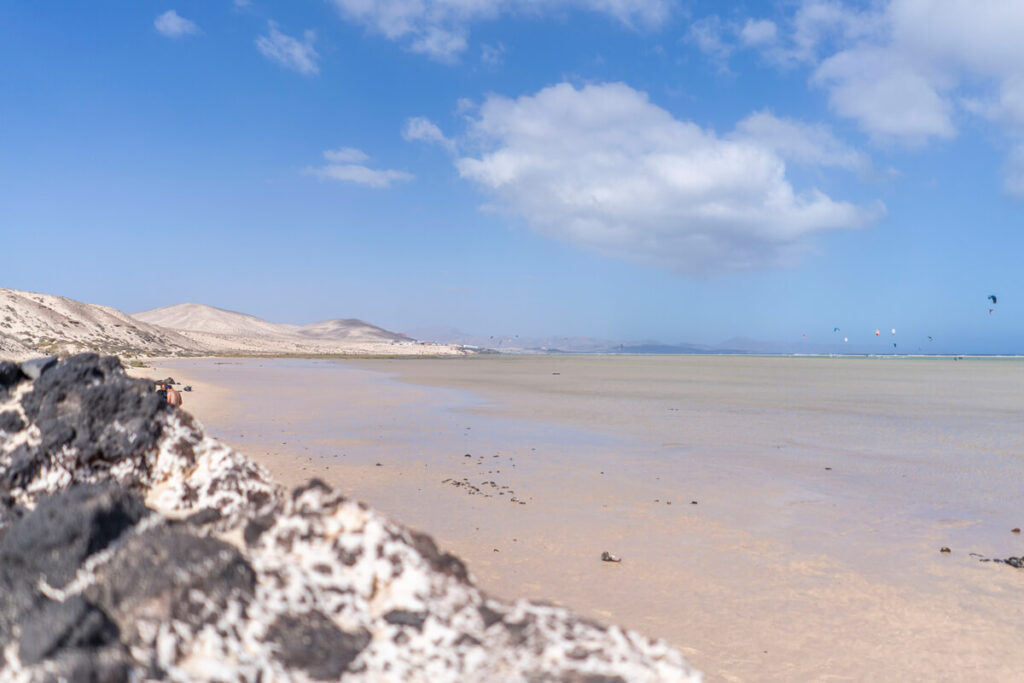
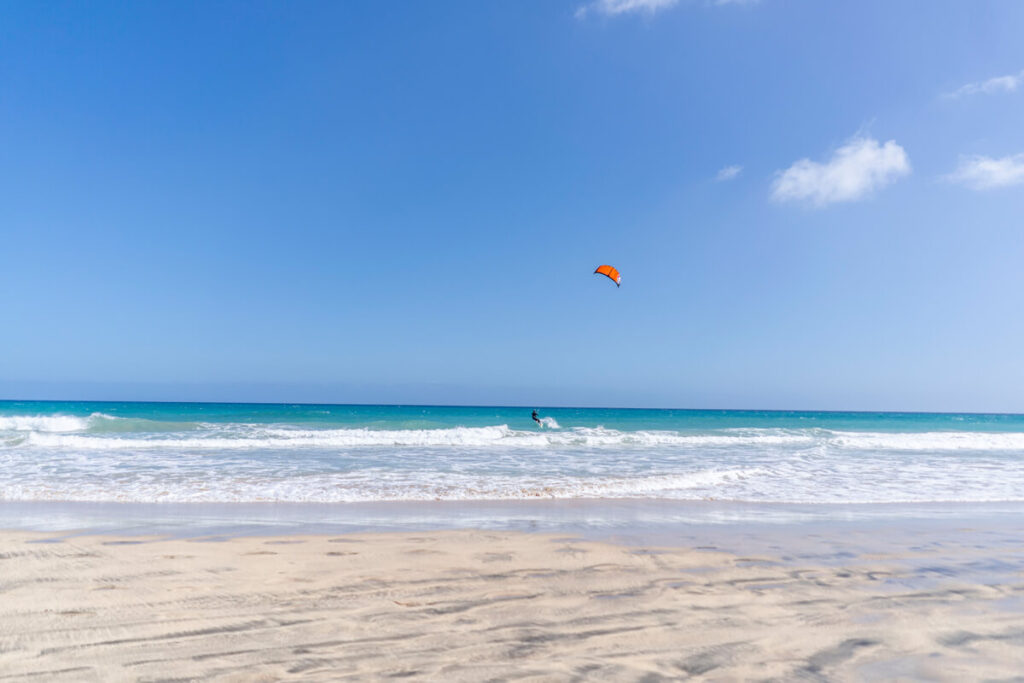
Morro Jable in the South
Morro Jable was once a picturesque harbor town on the southern tip of Fuerteventura, which has grown into one of the most popular places on the island. Numerous hotels, resorts, and vacation apartments are lined up here. In addition, the many cafés and restaurants tempt you with Canarian specialties, freshly caught fish, and international dishes.
The huge beach with its fine, light sand and crystal-clear water is particularly beautiful, inviting you to swim, snorkel, or simply relax. And also the beach promenade, which stretches for miles along the sea and is ideal for strolling.It’s a real eye-catcher. Also worth a visit is the striking Morro Jable lighthouse – a great photo opportunity and a popular meeting place at sunset.
Morro Jable is also a perfect starting point for excursions to the nearby Jandía nature reserve. Wild landscapes, secluded coves, and spectacular volcanic landscapes await you to explore. Particularly popular is Playa de Cofete, a wild, often deserted beach that is only accessible via a gravel road.
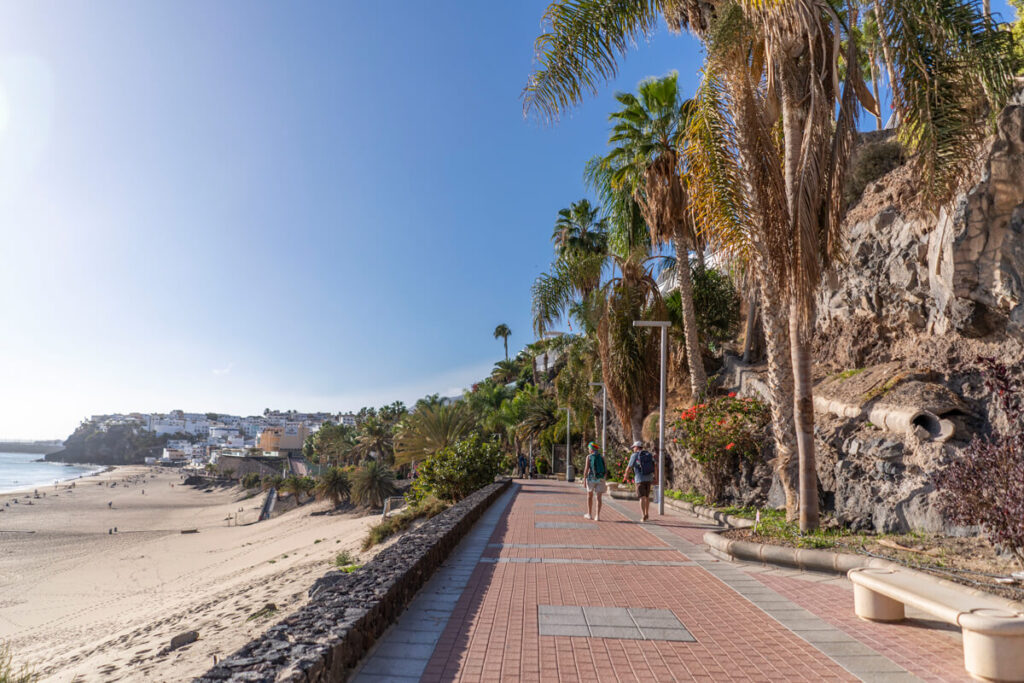
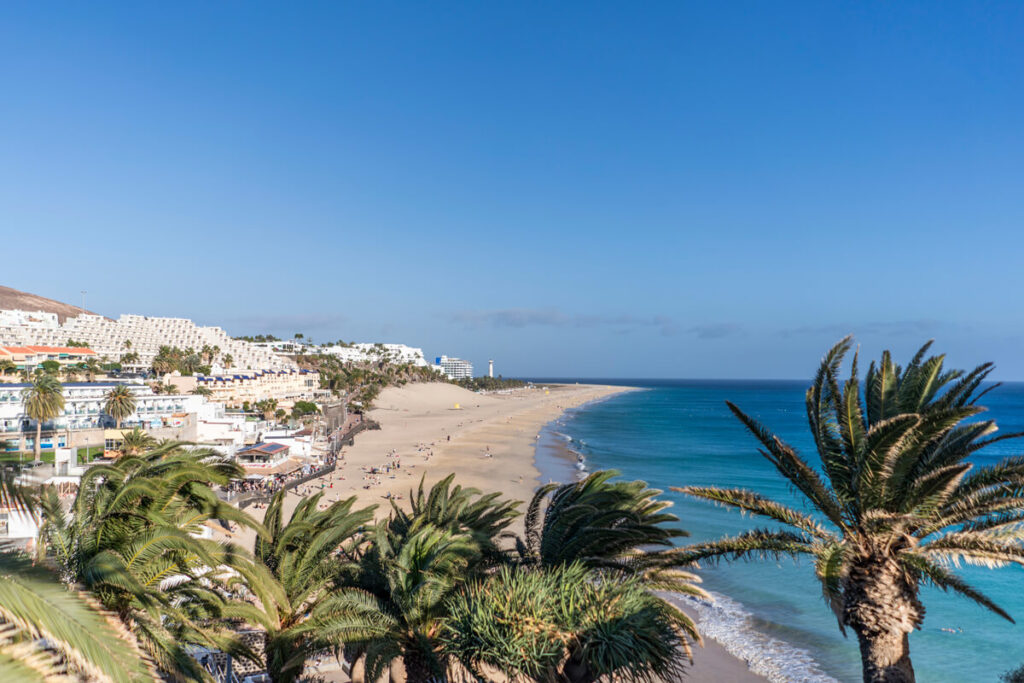

Other Sights
- Las Playitas – typical fishing village
- Playa de Cofete – beautiful beach in the southwest
- Faro de la Entallada – worth seeing lighthouse
- Natural swimming pool near Puerto de Rosario in the east
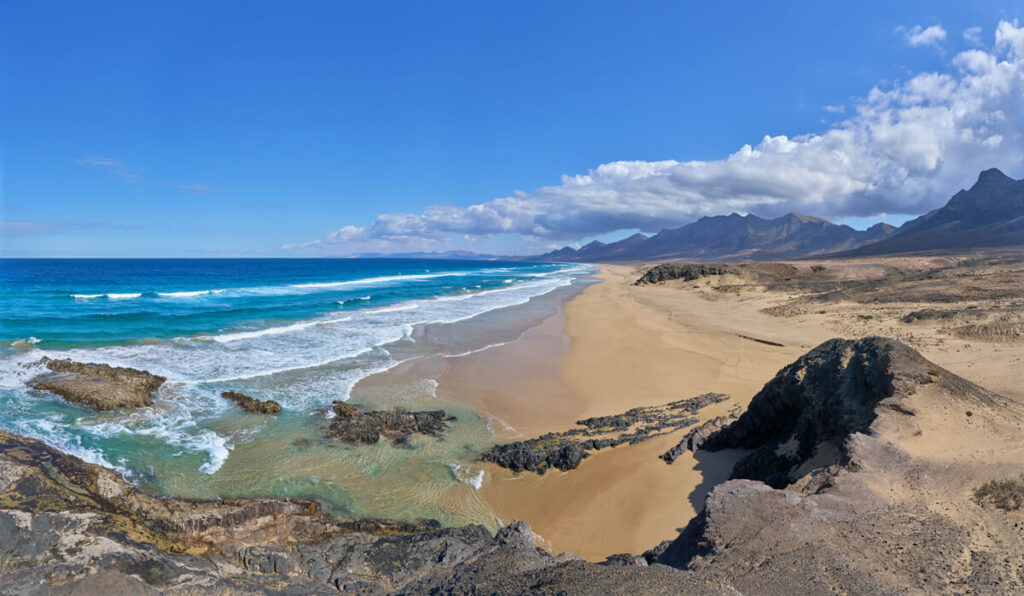
Activities and Excursions on Fuerteventura
Fuerteventura is a dream destination for active vacationers! The island offers plenty of opportunities for outdoor enthusiasts who appreciate the stark beauty of the volcanic landscapes, the sea, and the year-round mild climate. Here are a few highlights:
Boat Excursions
Boat excursions on Fuerteventura are a real highlight! The island offers stunning coastal landscapes, crystal-clear waters, and a fascinating underwater world that you can explore from the water. Whether dolphin watching, snorkeling, or simply a relaxing day at sea – you’ll find numerous options locally. Here are some of the most popular tours and excursions:
- Fuerteventura: Lobos Island Return Speedboat Ticket*
- Corralejo: Lobos Island Adults-Only Catamaran Day Tour*
- Fuerteventura: Glass-Bottom Boat Trip with Lunch*
- Morro Jable: Dolphin and Whale Watching Boat Trip, Drinks, and Swimming*
- Fuerteventura: Magic Deluxe Catamaran Cruise for Small Groups*
- Costa Calma: Fuerteventura Dolphin Watching Zodiac Boat Trip*
Surfing
Fuerteventura is world-famous for its very good surfing conditions – and rightly so! Especially on the north and west coasts, you’ll find numerous beaches and surf spots suitable for beginners and advanced surfers alike.
El Cotillo in the north, for example, offers gentle waves for beginners, while the spots near Corralejo offer more challenging conditions. You can rent equipment and take a course at the small surf schools.
Powered by GetYourGuide
Kitesurfing and Windsurfing
And not only are the waves fairly consistent on the island, but so is the consistent wind. This makes Fuerteventura one of the best kitesurfing and windsurfing spots in Europe. The lagoon at Playa de Sotavento in Costa Calma is a particular hotspot for all kitesurfers and windsurfers.
There, you’ll find flat water, consistent wind, and plenty of space to practice or even perform spectacular tricks if you’re already advanced. You can get expert advice and book courses for every level at the numerous schools.
- Fuerteventura: Windsurfing Taster Course in Costa Calma Bay*
- Fuerteventura: Kitesurfing Courses for All Levels. IKO Center*
Hiking
Even though Fuerteventura is better known for water sports, there are great hiking trails through the unique, barren volcanic landscape. One of the most impressive tours leads to the Pico de la Zarza, the island’s highest mountain. The trail starts at Morro Jable and leads through the wild Jandía nature reserve, until, after about two to three hours, you are rewarded with fantastic views of the west coast.
For an easier tour, hikes along the coastline are recommended. One of the most popular routes is the stretch from Ajuy to the famous caves. Here, you hike along rugged cliffs and black sandy beaches. The Barranco de las Peñitas, an impressive gorge near Betancuria, is also worth a visit. The landscape here is almost surreal and offers great photo opportunities.
- Fuerteventura: Guided Hike and Picnic in Cofete*
- Trekking Tour through the North of the Island*
- Fuerteventura: Guided Stargazing Calderón Hondo Volcano Tour*
Mountain Biking & Cycling
Fuerteventura has plenty of varied trails that lead you through the rugged volcanic landscape. Mostly on unpaved paths, you’ll cycle through the island’s unique landscape. Around Lajares in the north, for example, there are some well-known trails that lead through lava fields and dry riverbeds.
The route to Calderón Hondo is said to be a real insider tip with spectacular views of the crater (see route). If you prefer a more relaxed approach, the route from Costa Calma towards Jandía is ideal. Here you can cycle leisurely along the coast, with a light sea breeze and views of the turquoise blue water.
- Fuerteventura Norte: Coast to Coast E-Bike Tour*
- Corralejo: E-Bike rental with map to Popcorn Beach*
- From Corralejo: Fuerteventura Guided E-Bike Tour*
- Caleta de Fuste/Corralejo: Guided E-Bike Tour & Crater Hike*
Fuerteventura Travel Tips
Best Time to Visit
The best time to visit Fuerteventura is actually any time of year – the island has a mild, dry climate, perfect for sun worshippers and outdoor enthusiasts. We were last on the island for two weeks in February and had beautiful weather almost every day, with temperatures between 20 and 25°C. It was very windy, however.
Spring (March to May): Spring is sunny and pleasantly warm, with temperatures between 20 and 25°C. These months are ideal for activities such as hiking, biking, and sightseeing, as it is not yet too hot. The beaches are also usually a little quieter, as the high season hasn’t started yet.
Summer (June to August): In summer, temperatures regularly climb above 28°C, and it’s the busiest time on the island. Conditions are ideal for water sports such as surfing and kitesurfing, as the trade winds are particularly strong. Water temperatures rise and, at around 22–23°C, are pleasant for swimming and snorkeling.
Autumn (September to November): Autumn is the perfect time for many. Temperatures remain pleasantly warm (between 25 and 28°C), the sea is still warm, and the winds die down a bit. Surfers especially love autumn, as the wave conditions are optimal then.
Winter (December to February): In winter, Fuerteventura is a popular destination for those looking to escape the cold weather. Even in the winter months, daytime temperatures often range between 20–23°C with plenty of sunshine. The sea remains somewhat cooler (around 18–20°C), but for many, it’s still warm enough for swimming. Especially between December and February, it can occasionally get windy – perfect for windsurfers and kitesurfers.
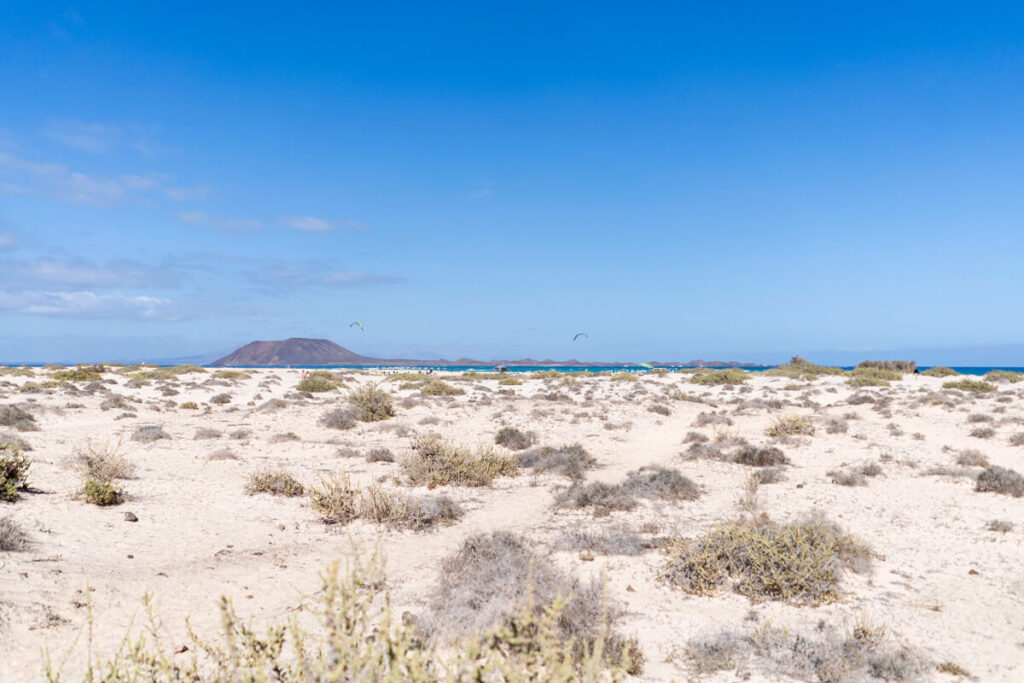
Getting to Fuerteventura
There are year-round direct flights from many German cities to Fuerteventura. The flight time is approximately 4 to 5 hours, and airlines such as Lufthansa, Condor, Ryanair, and Eurowings offer regular connections. During peak travel season, especially in summer and winter, there are often additional charter flights.
The airport is conveniently located only about 5 kilometers south of Puerto del Rosario and is well connected. There is a good bus service (lines 3 and 10) from the airport to the island’s capital and popular tourist destinations. Various providers offer shared or private transfers directly to hotels. This can be a convenient option, especially for larger groups.
From the airport, you can easily reach the island’s most important holiday resorts:
- Costa Calma and Jandía (south): about 1 hour’s drive
- Corralejo (north): about 40 minutes’ drive
- Caleta de Fuste (near the airport): only 15 minutes’ drive
- El Cotillo (west): about 40 minutes
- Morro Jable (south): about 70 minutes
Book a rental car
We recommend a rental car for your trip if you want to explore the island on your own. Many of the most beautiful beaches and remote locations are difficult to reach without a car, so mobility is definitely an advantage here.
At Fuerteventura Airport, you’ll find a wide selection of car rental companies, from international brands like Avis, Hertz, and Europcar to local providers like Cicar and TopCar.
As always, we recommend the following inclusive services:
- Comprehensive insurance and theft protection
- No excess (reimbursement)
- Glass, tire, and underbody protection
- Unlimited liability insurance
- All kilometers unlimited
- Fuel policy: full/full
We always book our rental car in advance on the website www.billiger-mietwagen.de*. We don’t just constantly link to this page because we get a few euros in commission; we honestly use this platform 95% of the time.
We’ve had nothing but positive experiences with this platform for many, many years. You can, of course, compare prices and services on many different platforms. That’s up to you.
Accommodation on Fuerteventura
1. Luxury
- Sheraton Fuerteventura Beach Golf & Spa Resort*
- Bahiazul Villas & Club*
- Hotel Boutique La Marquesina – Adults Only*
- INNSiDE by Meliá Fuerteventura – Adults Only*
2. Middle class
- H10 Ocean Suites*
- Village Club Fuerteventura Origo Mare*
- Hélène Holidays – Hotel Boutique*
- KATIS Villas Boutique in Bahiazul*
3. Budget
- Dreamsea Surf House Fuerteventura*
- Corralejo Lodge*
- Casa Anahita*
- Nomad Surf House*
- Hotel Rural El Cabo de “Casa Marcos*
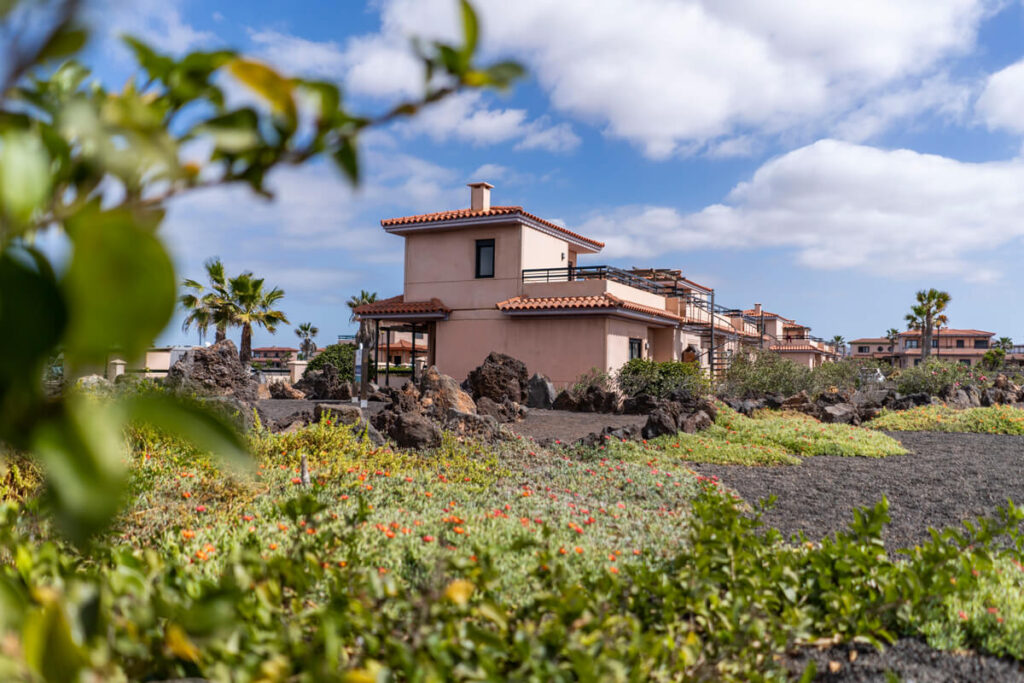
Conclusion on Fuerteventura
We had two super relaxing weeks on the island and really enjoyed the sun, the (mostly) good weather, and the numerous sights on Fuerteventura. While winter was still taking hold in Germany, we were able to Welcome early summer. The Canary Islands are ideal for a winter holiday, and it certainly won’t be our last trip.
What we liked:
- very good value for money
- lots of sun
- some great beaches and sea
- good (tourist) infrastructure
- mild climate even in winter
What we didn’t like:
- the very strong wind (almost daily)
- the landscape is a bit too barren